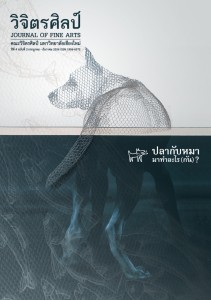ถอดรหัสภาพสลักบุรุษปริศนาถูกเลื่อยผ่าศีรษะในศิลปะบายนและหลังบายน: ภาพเล่าเรื่องศรีเสนาวทานจาก อวทาน-กัลปลตา ของเกษเมนทระ
Main Article Content
Abstract
Decoding the Undecoded Reliefs in Bayon and Post-Bayon style Depicting a Mysterious Man Cut Head by a Saw: the Story of srIsenavadana from Avadana- Kalpalata by Ksemendra.
This article aims to study the undecoded reliefs that depict the image of a mysterious man 's head, cut by a saw, which can be regularly seen in Bayon and Post-Bayon style. This mysterious head can be identified in this study because the iconological concept of these undecoded reliefs is similar to the story of Śrīsenāvadāna which is the second story included in the Avadāna-Kalpalatā written in the Sanskrit language by Ksemendra. This story is about King Śrīsena who dedicated, half of his body to Indra who disguised himself as a Brahmin in order to test the King's determination which was the belief in Mahāyāna and Tantrayāna schools of Buddhism that emphasized the ten paramita or perfection of the Bodhisattva, one of which is determination. This Śrīsenāvadāna also motif inspired the Sirijudāmani Jātaka which is the 7th story in Paññāsa Jātaka of Lan Na culture, which was written in Pali and amended, revised or imitated Sanskrit and Pali Buddhist Folktales. Therefore, even though the Sirijudāmani Jātaka was influenced by Therāvada Buddhism which emphasized the Bodhisattva's good deeds that enabled him to become the enlighted Buddha in the future, its story line was adapted from Śrīsenāvadāna which has been depicted through the images that are similar to the carved images that depict the Sirijudāmani Jātaka, such as the carved images on the wooden Buddhist Inscription Cabinet from Wat Boonyuen, Nan Province.


